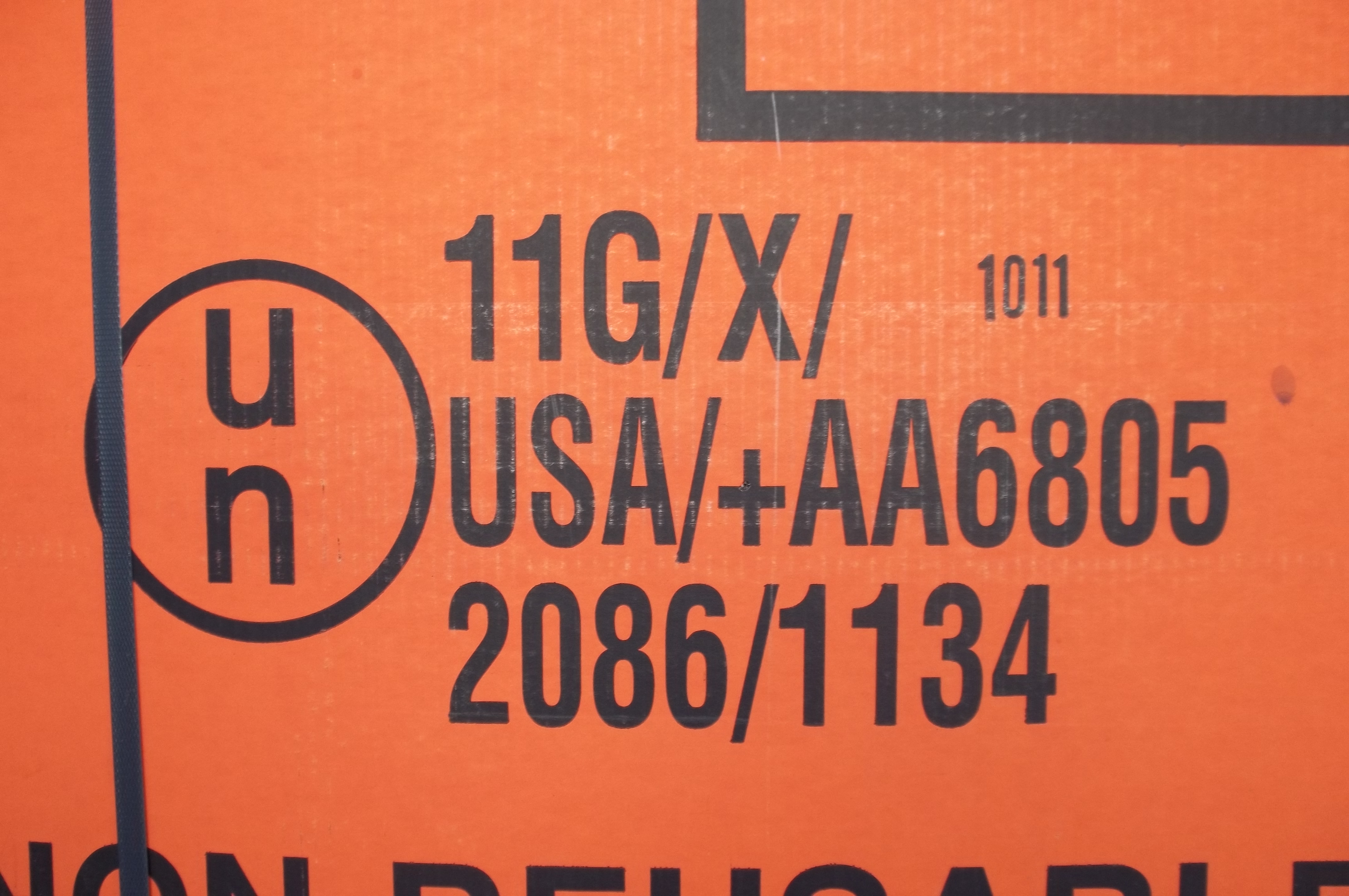Like all packagings used for the transportation in commerce of a hazardous material an Intermediate Bulk Container (IBC) must be authorized for the HazMat it is intended to contain. It must also, unless an exception is used, be designed, manufactured, and tested to meet a specification in the form of the UN standards (UN for United Nations) and be marked to demonstrate this.
Note: Specification packaging for an IBC – like all other non-bulk packagings but unlike most bulk packagings – means the UN standard and not the DOT specification.
In an earlier article I identified and explained the general requirements for all specification packaging markings at 49 CFR 178.3. This article will expand on those general requirements and look just at those that apply to an Intermediate Bulk Container at §178.703.
Who is responsible for the specification packaging marking on an IBC? Well, it’s complicated. But not as complicated as the general requirements of §178.3. It’s like this:
- The very first sentence of §178.703 reads, “The manufacturer shall mark every IBC in a durable and clearly visible manner.” This, of course, referring to the specification packaging marking makes it clear that the responsibility to mark the IBC with the specification marking is that of the manufacturer.
- However, §173.35(b)(2) reads that it is the responsibility of the person filling the IBC (usually but not always the shipper) to ensure the specification markings required by §178.703 are present before the IBC is filled and offered for transportation. Further, “Required markings that are missing, damaged or difficult to read must be restored or returned to original condition.”
- Therefore, the responsibility to display the specification marking on an IBC is shared by both the manufacturer who must make the initial mark and the person who fills the IBC (I’m assuming this is the shipper) to ensure the markings are present before filling.
Pursuant to 49 CFR 178.703, it is the responsibility of the IBC manufacturer to mark each IBC as follows:
- In a durable and clearly visible manner.
- In single line or multiple lines.
- Markings must be in the prescribed sequence (see below).
- In letters, numerals, and symbols of at least 12 mm in height if the IBC is manufactured after October 1, 2001.
- There is no requirement to separate the distinct parts of the marking with a slash mark “/ or “, hyphen “-“, or other spacer, though it is common to do so. Remember, these are the specification packaging marking requirements solely for IBCs. The specification packaging marking requirements of other types of packagings – such as those for non-bulk packagings at §178.503 – require the use of slash marks to separate information.
When marked in the above manner, the following must be displayed in the sequence below. I will refer to the applicable marking in Image #1 of this article as an illustration of each marking:
- The United Nations symbol as it is displayed at §178.503(e)(1)(i). The lower-case letters “un” must be used and not the upper-case “UN” (LOI 07-0060). The United Nations symbol must be completely enclosed in a circle. However, the circle may have small breaks as allowed by §178.503(e)(1)(ii). If stamped or embossed on a metal IBC, the United Nations symbol may be replaced by the upper-case letters “UN” without the circle.
- The code number for the IBC type per §178.702 (“11G” in Image #1). “W” must follow the IBC Type code if the IBC differs from the performance oriented standards for an IBC as described in subpart N or part 178 and it is approved for use by PHMSA/USDOT.
- A capital letter, “X”, “Y”, or “Z” indicating the IBC’s performance standard (“X” in Image #1).
- The month and year of manufacture (‘1011’ in Image #1 which, I assume, means October of 2011):
- The month must be designated numerically, e.g. “08” or “8” for August.
- The year must be only the last two digits, e.g. “16” for 2016.
- The country authorizing the specification marking. The marking ‘USA’ indicates the IBC was manufactured and marked in the U.S. in compliance with the hazardous material regulations of the PHMSA/USDOT (‘USA’ in Image #1).
- Identification of the manufacturer or agency that certifies the IBC’s compliance with the performance standards of subpart N and the testing requirements of subpart O (‘+AA6805’ in Image #1), as follows:
- Name and address of manufacturer, or;
- Symbol of manufacturer (if registered with PHMSA/USDOT), or;
- Symbol of approval agency (if registered with PHMSA/USDOT).
- The ICBC’s maximum stacking test load in kilograms (‘2086’ kg in Image #1). If an IBC is not designed for stacking, the figure “0” must be displayed. §178.703(b)(7) explains the required symbol to communicate if an IBC is designed for stacking or not designed for stacking. This symbol is only required on an IBC manufactured, repaired or remanufactured after January 1, 2011.
- The maximum permissible gross mass in kilograms (‘1134’ kg in Image #1). The gross mass is the combined weight of the packaging and the HazMat it contains when prepared for transportation.
Like this article? Subscribe to my Monthly Newsletter No marketing emails! |
And that’s it! But not quite…49 CFR 178.703(b) lists the requirements for additional markings if applicable to the type of IBC shipped. The additional marking requirements of 49 CFR 178.703(b) will be addressed in a separate article.
And don’t forget, in addition to the regulations of 49 CFR 178.703 the specification packaging markings of an IBC must also comply with the general requirements of §178.3.
Daniels Training Services 815.821.1550 |
For more information, read:


